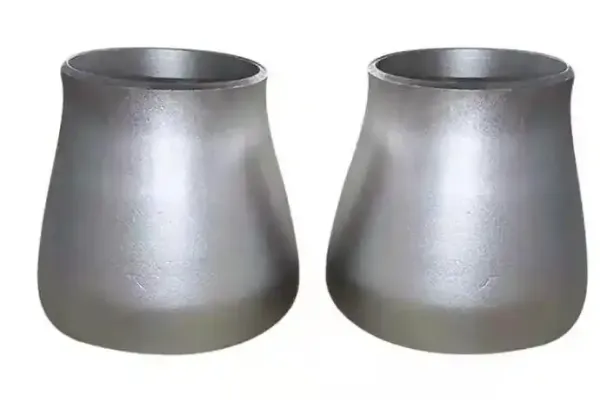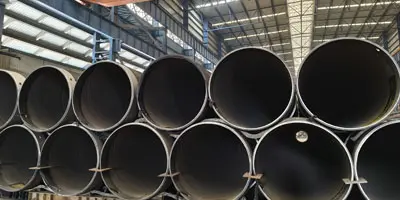Speaking of reducers, I believe everyone is familiar with them. Reducers are also called reducers. They are used to connect pipes of different sizes. They are often used in industry, mainly for connecting pipeline systems. We can use them in many places. However, due to the different midpoints of the inner diameters of reducers, reducers are divided into concentric reducers and eccentric reducers. So, do you know the difference between concentric reducers and eccentric reducers? How to use concentric reducers and eccentric reducers? In what occasions can they be used? Let's take a look.
Before understanding the difference and application of concentric reducers and eccentric reducers, we must first understand what is an eccentric reducer? What is a concentric reducer?
The so-called "eccentric reducer" refers to a reducer whose center is not on the same straight line. Its function is to run the pipeline against the wall or the ground without taking up space, and it connects two pipes of different diameters to change the size of the flow; while concentric reducers refer to reducers whose centers are on the same straight line.
Definition and structural characteristics of concentric reducers
Concentric reducers refer to pipe fittings whose centers of the pipe openings at both ends are on the same axis. When the pipe changes diameter, the position of the pipe remains unchanged, so it is usually used in pipe systems for gas or vertically flowing liquids. In terms of structure, the pipe openings at both ends are symmetrical, and the center line of the pipe will not be offset.
What are concentric reducers?
Eccentric reducers refer to pipe fittings whose centers of the pipe openings at both ends are not on the same axis, thus forming an asymmetric structure. A notable feature of eccentric reducers is that the pipe openings on one side are flat, while the pipe openings on the other side remain circular. According to the position of the tangent point, the installation methods of eccentric reducers are divided into top flat installation and bottom flat installation.
The main differences between concentric reducers and eccentric reducers
1. Structural differences:
Concentric reducers: The centers of the pipe openings at both ends are on the same axis, and the structure is symmetrical.
Eccentric reducers: The centers of the pipe openings at both ends are not on the same axis, forming an asymmetric structure, and one side is a flat design.
2. Application areas:
Concentric reducer: Mainly used for gas and vertical liquid pipelines, especially for occasions where the fluid flow is relatively stable.
Eccentric reducer: Mainly used for horizontal liquid pipelines, especially pipelines that need to be vented or drained, such as pump inlets, regulating valves, etc.
3. Fluid flow characteristics:
Concentric reducer: Due to the symmetry of the pipe openings at both ends, the fluid flow interference is small, which is suitable for occasions where gas and vertical liquid flow.
Eccentric reducer: Due to the asymmetric design, there may be greater interference when the fluid flows, but its flat side helps to vent and drain, which is suitable for liquid flow.
4. Installation method:
Concentric reducer: Due to the symmetric structure, the position of the pipeline is not easy to change during installation.
Eccentric reducer: Depending on the direction of the tangent point, you can choose top flat installation or bottom flat installation to meet different pipeline requirements.

Common Standards & Materials
They share the same specifications, materials and standard systems, such as ANSI B16.5 and ANSI B 16.47, and the materials comply with ASTM A106/A53 GRB, API 5L, APT5CT, ASTM A105, ASTM A234, ASTM A106, DIN, etc. ASTM/ASME A860 Grade WPHY 42/46/52/60/65/70 Reducing Eccentric/Concentric Fittings can be used in oil and gas pipeline applications. Other standards can be divided into alloy elements:
Carbon steel:
ASTM/ASME A234 WPB/WPC
Alloy steel: ASTM/ASME A234 WP 1/ WP 12/ WP 11/ WP 22/ WP 5/WP 91/ WP911/15Mo3 /15CrMoV/ 35CrMoV
Stainless steel: ASTM/ASME A403 WP 30/304L/304H/304LN/304N/316/316L/316H/316LN/316N/316Ti/321/321H/347/347H
Low-temperature steel: ASTM/ASME A402 WPL3/WPL 6
These materials are widely used in the oil and gas industry, water pipelines, and chemical processing systems.
How to Choose the Right Reducer
Choosing the correct reducer depends on several factors:
Pipeline Orientation: For vertical pipelines, concentric reducers are typically preferred. For horizontal systems, especially those requiring venting or drainage, eccentric reducers are ideal.
Flow Type: Concentric reducers are suitable for stable, smooth gas or liquid flow. Eccentric reducers are better for applications where the flow path needs to avoid fluid accumulation.
Installation Requirements: If the pipe system needs flexibility in installation (e.g., pump inlet), eccentric reducers allow for more installation options.
Conclusion
In conclusion, both concentric and eccentric reducers play vital roles in various piping systems, each offering unique advantages depending on the pipeline’s requirements. Concentric reducers are ideal for gas and vertical liquid systems with stable flow, while eccentric reducers excel in horizontal liquid pipelines, especially when drainage or venting is needed. By understanding the structural differences, flow characteristics, and application requirements, engineers can make more informed decisions to ensure the efficiency and safety of their pipeline systems.
Whether you're working with oil pipelines, chemical transport systems, or water treatment facilities, selecting the right reducer—based on its design, functionality, and application—will help optimize the performance of your piping network.
Baowi Steel provides various pipe fittings including various reducers, flanges, elbows. We produce them based on the principle of service first. If you have any needs, please feel free to contact us.






 English
English Español
Español بالعربية
بالعربية











 Phone :
Phone :  Whatsapp :
Whatsapp :  Email :
Email : 


